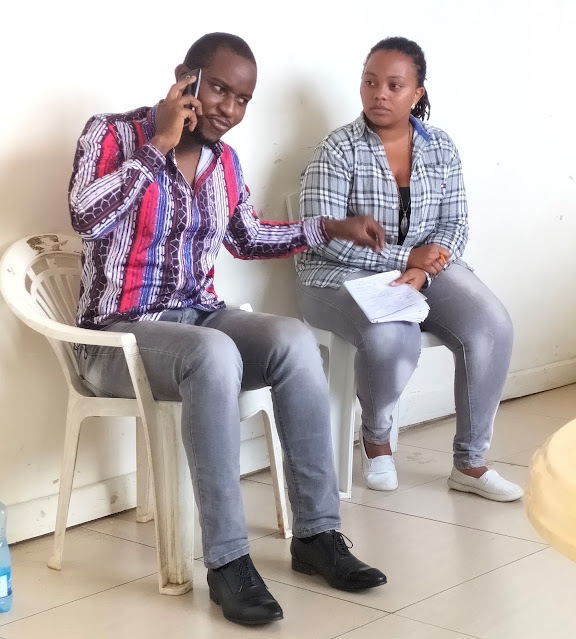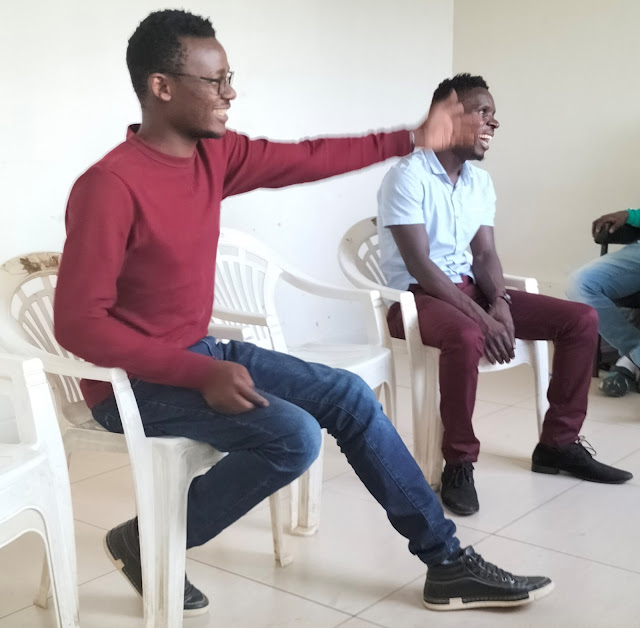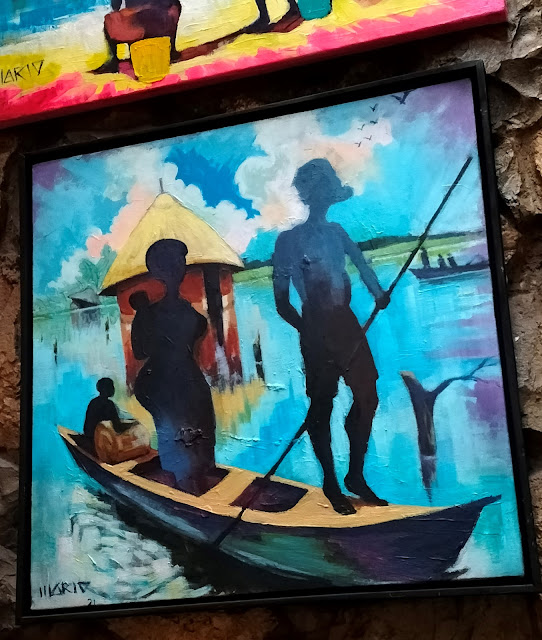MATRIMONY
AND MAYHEM IN THE NEW CRONY PRODUCTION
Crony
Productions is a brand new theatre troupe that has its debut this Saturday
night from 6pm at Kenya National Theatre.
Intending to
be a red carpet affair, the show, ‘Willing Buyer, Willing Seller’ is a comedy
starring a slew of familiar faces. They include Nick Kwach, Cyprian Osoro,
Victor Nyaata, Anne Kamau, and Esther Kahuha, all of whom have one thing in
common, apart from their acute ability to make people laugh. And that is they
have all been key players in Heartstrings Kenya productions.
But as she
spoke to The Weekender, Anne Kamau underscored an important point. Asked if
Crony was on good terms with Heartstrings, she said, “We are all one family.”
By contrast,
five of Heartstrings’ faithful cast members spent most of 2021 producing
comedies in the Kisii language! “No, I don’t know the language well, but well
enough to play my part,” says Nick Kwach, who joined in the initiative that
Osoro and Nyaata had been carrying on for several years, namely making Kisii
comedy shows that have attracted huge local audiences. “We even had people come
from the [Kisii] Diaspora to see our productions,” Kwach adds.
The fourth
former Heartstrings players is Sammy Mwangi’s assistant director, Dennis
Ndeng’a who also admitted Kisii wasn’t his mother tongue. “But I would come up
with the concept [in Swahili and English] and then our group would
[collectively] devise the script,” he said.
The big
advantage that the foursome had in 2019 is that all the time that Osoro and Nyaata
were working with Heartstrings, they were spending time on the side staging
skits and scripts in Kisii. So they had already built up a fan-base that was
eager to come out to see shows incorporating non-Kisii speakers who were
getting laughs and building audience attendance.
“We had
great audiences all last year, and we also following the [COVID] protocols,”
said Kwach. “But that’s why we went to Nairobi Cinema. We had plenty of room
for our audiences to do social distancing,” he added.
Saturday
night’s premiere performance will only be a one-off event, unlike Heartstrings
whose shows tend to run three or four days, and perform to packed houses. But
what is also exciting about this new show is that it will feature several other
actors who have had a long history with Heartstrings. Both Anne Kamau and
Esther Kahuha used to be regular players in Heartstrings, but for one reason or
another, they absented themselves in the last few years. Both are powerful
actors who bring those years of experience with them, and stand at par with
equally powerful players like Kwach, Nyaata, and Osoro.
Tracy’s
timing is perfect. She’s right there seconds after he’s made that pledge. It’s happenstance
that they are all in a pub, and Tracy is primed for matrimony. She’s a charmer
and they ‘fall in love’ overnight. The wedding is planned soon after she moves
into his flat and proceeds to apparently take over his life. But that’s when
the problems arise. Max has a mind of us own. In fact, it turns out the two
have very different views on just about everything. And that’s how the hilarity
ignites.
I won’t be a
spoiler and give the mayhem away. Suffice it to say, fans of Heartstrings are
likely to savor the comedy that they will find in ‘Willing Buyer, Willing
Seller’ this Saturday at KNT.























